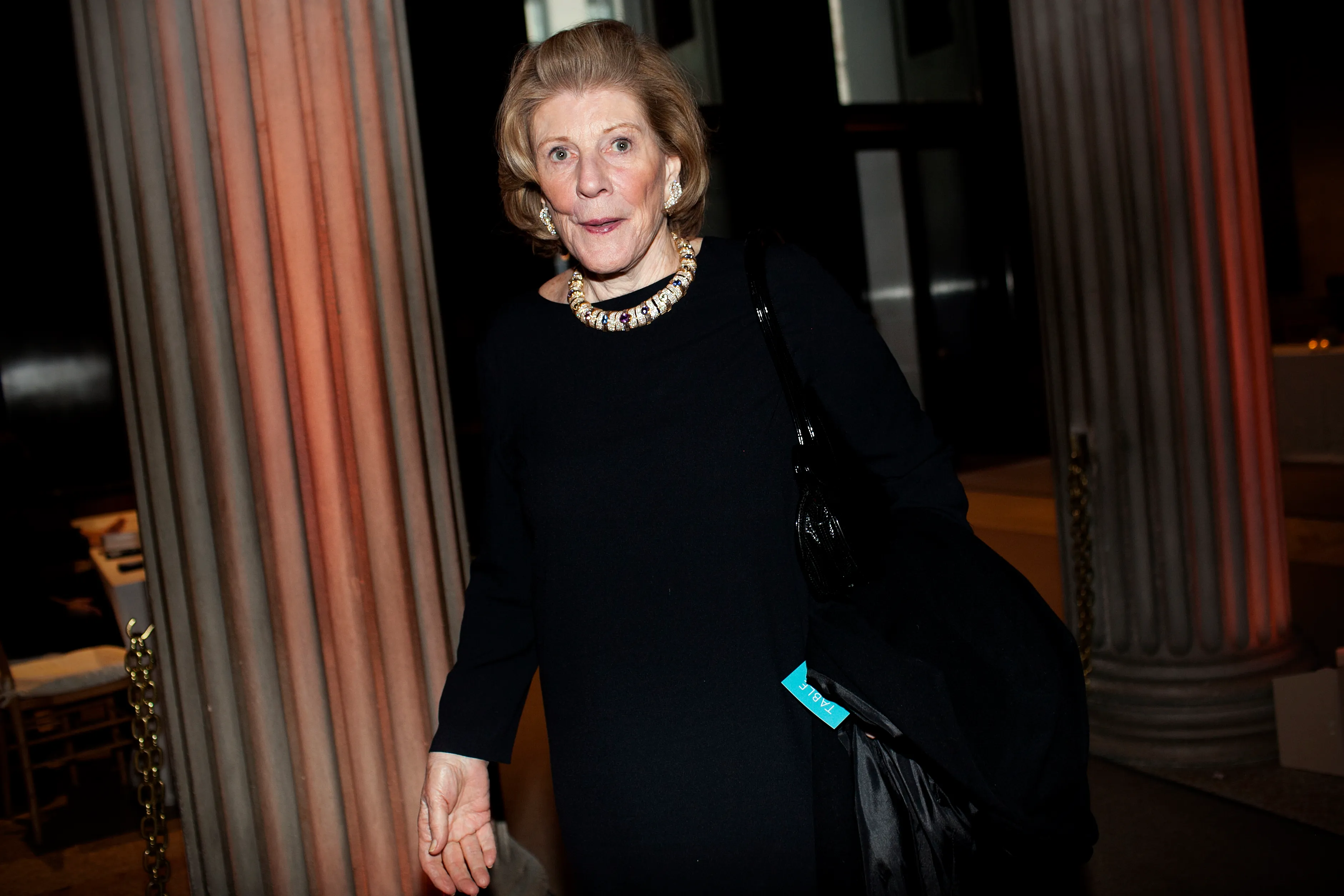By Elisa Carollo
Copyright observer

There are many signs that the art world has reached the end of an era, and the passing of arts patron and philanthropist Agnes Gund on Friday, September 19 is one of the most definitive. Her death marks the departure of an entire generation of committed collectors, leaving the industry to grapple with who will step into their place and sustain a system that has grown vast and unwieldy.
Gund died at age 87, as reported by the New York Times. The cause has not been disclosed, though her daughter Catherine Gund confirmed her passing.
A relentless supporter of art and culture, Gund was among the most influential U.S. patrons of the past half-century (even taking a spot on our 2023 Business of Art Power List). As president emerita of the Museum of Modern Art, where she served as president for more than 11 years, she played a transformative role in expanding the museum’s reach and collection, directly helping raise the funds that made its most recent expansion possible.
She sat on numerous boards, supported generations of artists and championed art as a tool for education, equity and systemic change. She reportedly gave away two-thirds of her assets each year to sustain New York’s cultural life and was a fixture at galas, including those of El Museo del Barrio, YoungArts, The Kitchen and MoMA PS1, where she was seen this summer.
Her collection included some of the greatest names of the past century—artists she not only supported but knew personally. Masterpieces by Mark Rothko, Roy Lichtenstein, James Rosenquist, Jasper Johns, Brice Marden, Agnes Martin, Yayoi Kusama and Louise Bourgeois (and the list just goes on) formed part of an encyclopedic collection that spanned the breadth of contemporary art across media and styles.
Gund had already donated hundreds of works to MoMA, which honored her with the exhibition “Studio Visit: Selected Gifts from Agnes Gund,” showcasing around 50 of the more than 800 works she gave. In total, over 900 artworks from her collection have been gifted or promised to public institutions nationwide. As for what’s left, it remains to be seen which auction house will secure this trophy estate.
She was also a longtime advocate for arts education and social justice. In 1977 she founded “Studio in a School,” an innovative program that placed professional artists in New York public schools, inspiring tens of thousands of children. She extended her civic influence by serving on the New York State Council on the Arts and as chair of the Cultural Affairs Advisory Commission of New York City.
In 2017 she sold her beloved Roy Lichtenstein Masterpiece to hedge fund investor Steven Cohen for $165 million to launch Art for Justice, a catalytic six-year fund targeting the racial inequities of mass incarceration. The fund sunsetted in 2023 after distributing more than $127 million in grants. “Agnes is not done,” Helena Huang, Art for Justice’s project director, told Observer at the time, noting Gund’s growing focus on reproductive rights and her enduring concern for the state of the world.
In November 2023 she sold another Lichtenstein, directing more than $2 million to the Groundswell Fund, which advocates for reproductive rights, and to Michigan’s Reproductive Freedom for All ballot measure. “She would say that there’s less art to sell,” Huang commented, when asked whether Gund would continue parting with works for charity. “But she’ll continue to leverage everything that she has.”
Who was Agnes Gund?
Agnes Gund was born on August 13, 1938 in Cleveland. Her father, George Gund II, built a fortune in real estate, brewing and investing and served as president of the Cleveland Trust Company, Ohio’s largest bank. After his death in 1966, she inherited a substantial trust and soon purchased a Henry Moore sculpture, beginning what would grow into a collection of some 2,000 works.
Her passion for art began in childhood with visits to the Cleveland Museum of Art and deepened at Miss Porter’s School in Farmington, Conn., where she enrolled after her mother’s death in 1954. “I had a magical art history teacher who didn’t just give you the artist’s name and the date of the picture; she showed you how to look at artwork,” she told Lifestyles magazine in 2010.
Gund graduated from Connecticut College for Women (now Connecticut College) in 1960 with a degree in history. Three years later she married Albrecht “Brec” Saalfield, a private-school teacher and heir to the Saalfield Publishing Company. The marriage ended in divorce, as did a second marriage to Daniel Shapiro, a lawyer and teacher. She had four children with Saalfield—Catherine, David, Anna and Jessica—and is also survived by her brothers Gordon and Geoffrey Gund, her sister, the theater producer Louise Gund, and 12 grandchildren.
The passing of Agnes Gund leaves a profound void in New York’s art world and beyond, sharpening the question of who will carry forward the work of her generation and ensure the future of cultural patronage.



